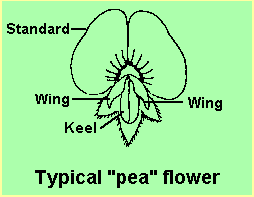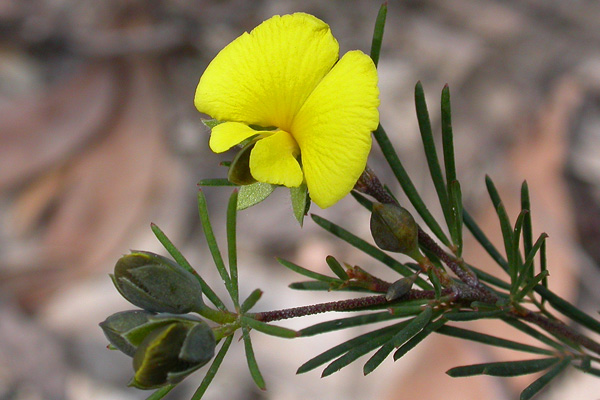General Description:
Gompholobium is a genus of about 40 species all but one of which is endemic to Australia. Most species occur naturally in south-west Western Australia. They are small to medium-sized shrubs having typical “pea”-shaped flowers consisting of 4 petals; the “standard”, the “keel” and two “wings” (as shown in the diagram). Flower colour is usually in shades or yellow or pink. The genus includes species formerly classified under Burtonia.

Gompholobium glabratum is a small shrub to about a half metre high. Leaves are pinnate with about 7 leaflets, each between 10 to 15 mm long with revolute or recurved margins. The ‘pea’ shaped, yellow flowers appear in winter and spring on the ends of branchlets. They are about 15 mm wide and are followed by ovoid-shaped seed pods about 10 mm long.
Although of great horticultural merit, gompholobiums are rarely seen in cultivation and G.glabratum is no exception. This is due to the lack of availability of plants and seed as well as to the fact that the genus has not proven to be very reliable as garden plants. If plants are available they would probably require a well drained, sheltered position. They would make excellent and attractive pot plants.
Propagation from seed is relatively easy following pre-treatment to break the physical dormancy provided by the impervious seed coat. Pre-treatment can be carried out by abrasion or by the use of boiling water (further details can be found in under the “Propagation” tab of the “Pea Family” page). The seed retains viability for many years. Cuttings using firm, current season’s growth may be successful but are usually very slow to strike.

Gompholobium glabratum
Photo: Jill Dark
 Australian Native Plants Society (Australia)
Australian Native Plants Society (Australia)